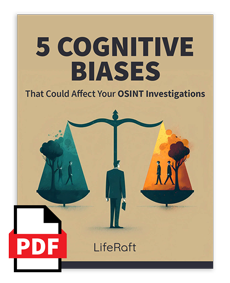For even the most gifted OSINT analyst, natural talent isn’t enough.
Other people have found themselves in this position before. And more than likely, they have already figured out solutions to common problems that you’re facing.
Luckily, many of the world’s best investigators have written about their experiences. You can use their lessons to avoid mistakes and get a leg up during your next assignment. Rookie analysts would be especially wise to comb through some OSINT books.
Sure, it doesn’t hurt to hone your skills through hands-on experience. But building a theoretical grounding of intelligence collection and analysis can take your tradecraft to the next level.
So to help you out, we’ve compiled some of our favorite OSINT books for analysts, investigators, and researchers.
If you’re new to the field or looking to develop your skills further, the list below represents a great place to get started.
Now that you have seen the list, let’s break down each of the OSINT books above.
Learn More: 5 Cognitive Biases That Could Affect Your OSINT Investigations
1. Open Source Intelligence Techniques
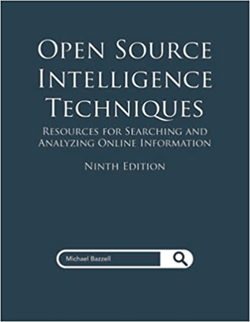 This classic from ex-FBI investigator Mike Bazzell is widely considered a must-read for every OSINT analyst.
This classic from ex-FBI investigator Mike Bazzell is widely considered a must-read for every OSINT analyst.
In the book, Bazzell shares his methods to locate information on targets through open sources. Techniques include navigating the dark web, uncovering website owner information, and locating hidden social media content.
Perhaps the most striking thing about this book is Bazzell's ability to imagine unintended purposes for new technologies. Additionally, the book explores related topics of interest to the OSINT community, such as digital privacy and operational security.
2. Critical Thinking for Strategic Intelligence
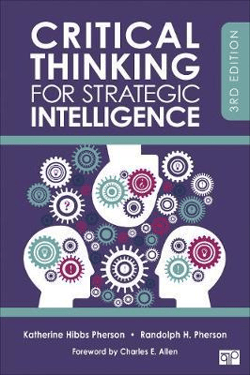 Critical Thinking for Strategic Intelligence isn’t explicitly about OSINT. Still, it's a must-read for anyone new to the field.
Critical Thinking for Strategic Intelligence isn’t explicitly about OSINT. Still, it's a must-read for anyone new to the field.
Drawing from years of experience, the authors walk through 20 questions every analyst must ask during an investigation. They explore each step of the research process, including where to get started, finding the data you need, defining your point-of-view, and presenting analysis to clients.
In the last part of the book, the authors include case studies on events from terrorism and foreign intelligence to counterintelligence and corporate decision-making. All of which provide readers a chance to apply their craft to address real-world problems.
A great read for any new analyst looking to build a theoretical foundation of intelligence collection and techniques.
3. Open Source Intelligence Methods and Tools: A Practical Guide to Online Intelligence
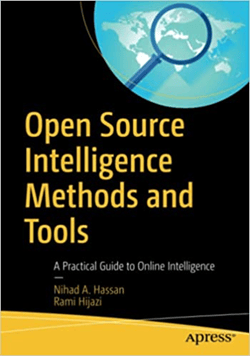 If you want to become a top analyst, then you need to keep a variety of techniques in your OSINT toolkit.
If you want to become a top analyst, then you need to keep a variety of techniques in your OSINT toolkit.
Open Source Intelligence Methods and Tools: A Practical Guide to Online Intelligence represents a great place to start this process. In each chapter, the authors Nihad Hassan and Rami Hijazi list dozens of OSINT resources and tactics to collect information from public sources.
Topics include tracking ship movements, navigating the dark web, and exploiting lesser-known IoT search engines. The authors also cover how to hide your digital footprints to conduct anonymous investigations.
An outstanding read for the beginner OSINT analyst looking to break into the field. But there are a lot of interesting nuggets for more experienced practitioners here too.
4. We Are Bellingcat: An Intelligence Agency for the People
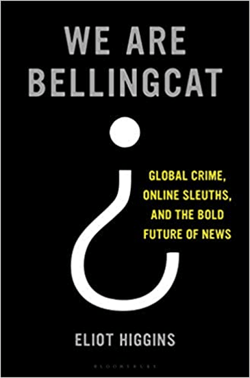 Eliot Higgins is the man behind one of the most respected (or despised depending on who you ask) OSINT groups of all time: Bellingcat.
Eliot Higgins is the man behind one of the most respected (or despised depending on who you ask) OSINT groups of all time: Bellingcat.
The book dives deep into the work behind some of the organizations’ biggest accomplishments, such as revealing the identities of the Charlottesville Neo-Nazis, the perpetrators behind the downing of Malaysia Flight 17 over Ukraine, and the sourcing of weapons in the Syrian Civil War.
Higgins also takes time to lambast what he dubs the “counterfactual community” – a murky collection of jingoistic state bloggers and conspiracy theorists who trade disinformation to mislead the public.
Every analyst needs to assemble a toolkit of OSINT techniques. But Higgins' book provides a case study that teaches readers how to actually implement these tactics.
5. Hiding from the Internet: Eliminating Personal Online Information
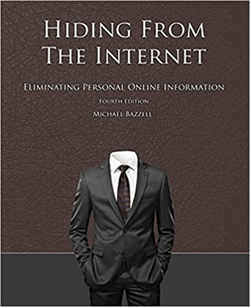 Mike Bazzell represents such a juggernaut in the OSINT community, he made our list twice!
Mike Bazzell represents such a juggernaut in the OSINT community, he made our list twice!
Hiding from the Internet: Eliminating Personal Online Information reveals how popular sites and online tools expose our personal information.
Bazzell also takes a deep dive into each source, revealing ways to remove and safeguard your data.
Anyone who values privacy should have this book on their shelf. Additionally, it also represents a fantastic resource for any security professionals involved in close protection.
6. Hunting Cyber Criminals: A Hacker's Guide to Online Intelligence Gathering Tools and Techniques
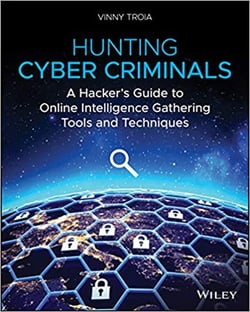 Cybersecurity evangelist Vinny Troia is widely known as a go-to expert in breach remediation and digital forensics.
Cybersecurity evangelist Vinny Troia is widely known as a go-to expert in breach remediation and digital forensics.
His book, Hunting Cyber Criminals: A Hacker's Guide to Online Intelligence Gathering Tools and Techniques, explores the gripping account of how he used OSINT techniques to track criminals across the web.
Along the way, he shares with readers his tradecraft and process. Troia’s mix of story-telling, hands-on tutorials, and real-world case studies makes for an engaging read.
Admittedly, Trioa aims his commentary at those with a cybersecurity background. That said, the book does an outstanding job of exploring the mindset of a hacker. Readers learn how criminals can exploit seemingly harmless information to target an organization.
That makes Troia's work a must-read for those on the physical side of the security industry, too.
7. Nowhere to Hide - Open Source Intelligence Gathering
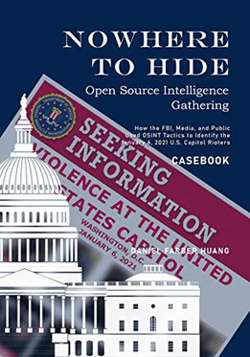 On January 6, 2021, thousands of rioters stormed the U.S. Capitol Building in Washington, DC. The incident shocked the world and left five people, including one police officer, dead.
On January 6, 2021, thousands of rioters stormed the U.S. Capitol Building in Washington, DC. The incident shocked the world and left five people, including one police officer, dead.
Nowhere to Hide provides a vivid recounting of the events that day. Author Daniel Huang also delivers insights into the open-source intelligence techniques investigators used to identify the participants in this incident.
The book contains many practical tips for both novice and experienced OSINT analysts alike.
Wrapping It Up on OSINT Books
Hands-on practice always represents the best way to develop your tradecraft. But building a solid theoretical foundation will go a long way towards making you a better analyst.
The list of OSINT books above should provide more than enough material to get started.

